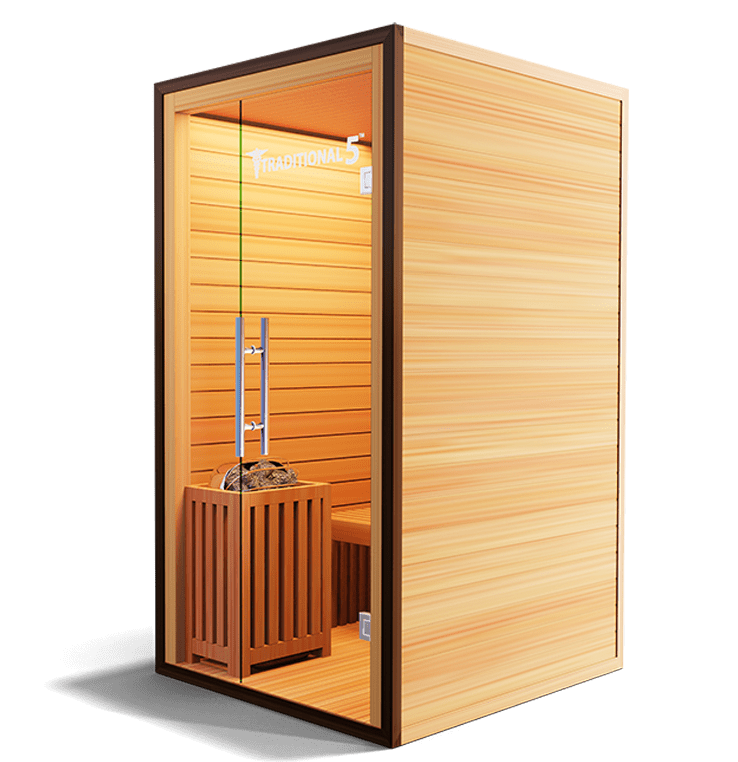Excitement About Traditional Sauna
Excitement About Traditional Sauna
Blog Article
5 Simple Techniques For Traditional Sauna
Table of ContentsThe Main Principles Of Traditional Sauna Facts About Traditional Sauna RevealedThe Traditional Sauna PDFsTraditional Sauna for Dummies
The majority of the weight shed in a sauna is water loss and is re-gained upon rehydrating. Nonetheless, certainly sauna can be a vital part of a healthy and balanced weight management program. To check out the differences between standard and IR saunas, I will separate these right into proven, academic, and made distinctions.Thus, the hottest point in the saunawhich is at the ceiling straight over the sauna heateris typically between 185 and 190 F. Traditional Sauna. Claims that a typical sauna goes beyond 200 F is just not real and not applicable for electric saunas marketed in the United States. The temperature level for a far-infrared sauna is usually established between 120 and 140 F; nonetheless, unlike the standard sauna, the goal in and IR area is not to attain a high temperature level
Due to this, the temperature difference is virtually pointless, considering that excessive sweating results in both sauna kinds, but the technique of warming the body is different. In an IR sauna the bather will feel hot and will sweat a lot, however at a lot lower temperature levels. Therefore, if the objective is to invest longer time periods in the sauna, the IR sauna is a good selection.

The 5-Minute Rule for Traditional Sauna
When the heat is achieved, the components cycle on and off to keep the high temperature. A lot of traditional sauna users take pleasure in putting water over the rocks to produce steam to raise sauna humidity degrees. The advantages of pouring water over the rocks include: making the room much more comfortable, moistening the nasal passages, and enabling the use of aromatherapy by mixing vital oils with the water.
In a far-infrared sauna, the heat waves permeate the body to efficiently heat up the body and increase the body core temperature level. To attain this raised temperature level, Far-infrared emitters develop infrared power which is close to the very same wavelength as that which the body normally emitsoften referred to as the "Important Variety" of 7 to 14 microns), so the power is well gotten by the body.
When the energy goes into the body, it creates the body temperature level to raise and eventually results in perspiration. In an infrared sauna it is necessary for the emitters/heaters to continue to be on practically continuously. Considering that there is no index mass of rocks to retain warmth, the sauna will certainly cool if the emitters turned off.
As pointed out above, the sauna bather in an infrared room intends to place himself before running emitters to get optimal take advantage of the heat. The heating time for both areas can be extremely different, depending on how the areas are utilized. For a standard sauna, a bather must allow 30-40 minutes for the room to attain a desired temperature and to properly pre-heat the rocks.
Some Of Traditional Sauna
A well constructed sauna will typically attain a temperature of 150-160 F in regarding 30-40 mins. For hotter temperatures, the room may need to warm for a longer duration.
To some, 15 mins was "squandered" while the infrared power heated the wood panels as opposed to warming a body, while others locate a pre-heated room to be a lot more comfy and think a raised starting temperature is needed to begin perspiring. The length of suggested use for every area is about the very same (10-15 minutes per session); nevertheless, because of the lower air temperatures and the ability to feel the impacts of infrared warmth much faster than a standard sauna, it is not uncommon for an individual to spend an overall of 20-30 minutes in an infrared sauna.
Standard saunas often tend to be larger (therefore utilize more electrical power) than infrared saunas, although conventional saunas are definitely available in one and two person sizes too. For a two-person conventional sauna, 5x6 or 5x7 size is most preferred. The leading bench can pleasantly seat why not try these out 2 or three people and is additionally long sufficient to relax throughout the sauna session.


The average expense per kWH of electrical energy in the U.S. is about $0.11, so a 4.5 kW heater will certainly set you back around $.50 to compete one hour, if the heating system runs constantly for one hour. Usually a sauna heating system will compete 75% of the very first hour and 50% of subsequent hours on since the aspects cycle once the established temperature is attained.
What Does Traditional Sauna Do?
A two individual far-infrared space is normally literally smaller than a typical sauna, commonly about 4' x 4' or smaller. The IR heating unit is normally 1.5-1.7 kW making use of a 120 volt 15 amp plug-in service. Since the room can be used sooner page than a sauna area, we will assume the space is utilized for to of an hour consisting of warm up time.
Lastly, there is a hardly ever discussed distinction in the social experience in between both rooms. While our culture has shed several of the social advantage of the standard sauna experience, it can be extremely socially satisfying. From family time in the sauna, to heart-felt discussions with better halves, to sauna partiesthe typical sauna experience can cause intimate interacting socially.
A lot of higher end infrared spaces consist of colored light treatment, noise systems and full-glass fronts.
Report this page